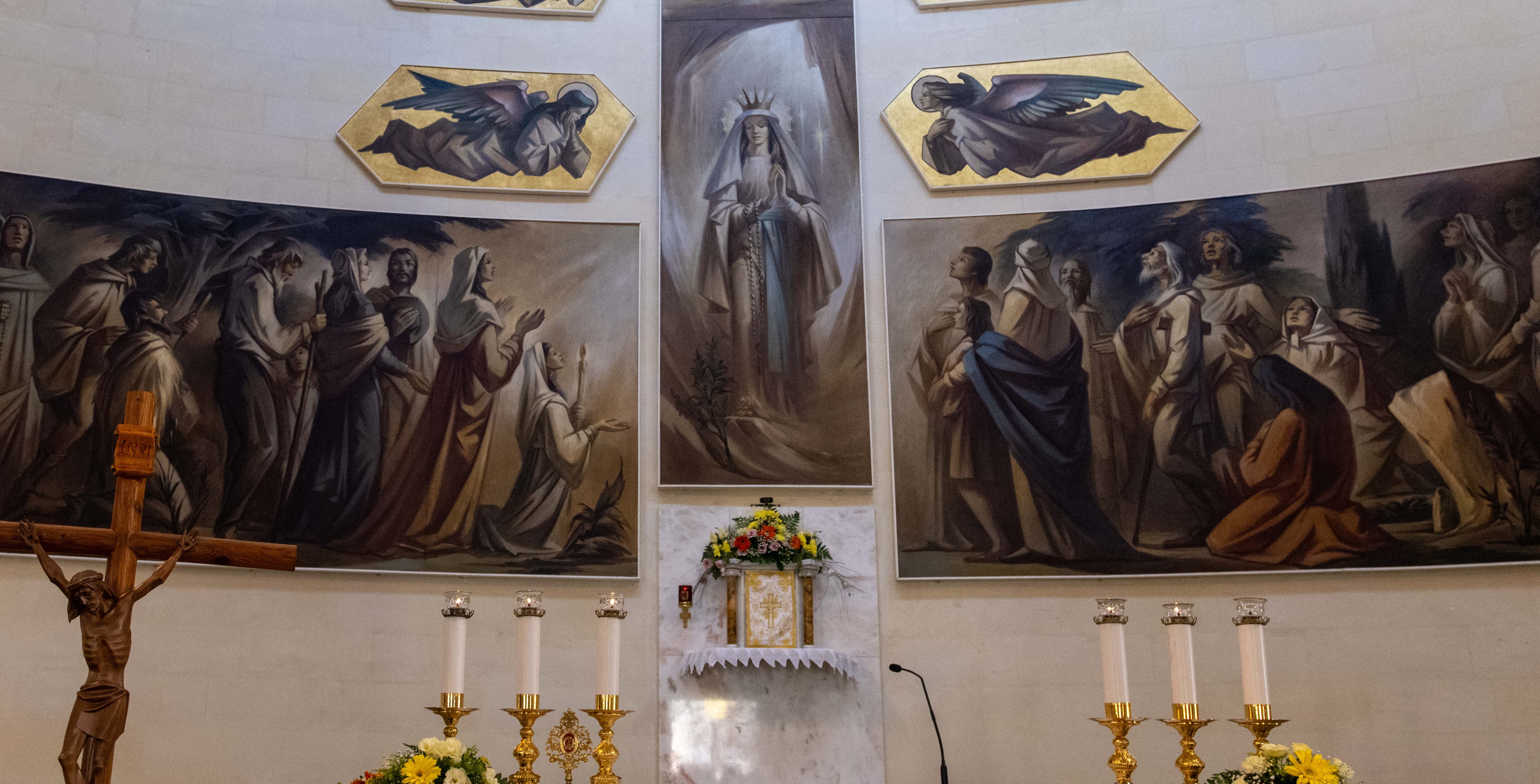
Ark of the Covenant – Mary and the Tabernacle
The third reflection about the titular painting at the parish church of Our Lady of Lourdes, Paola
In the interim just as the Mother of Jesus, glorified in body and soul in heaven, is the image and beginning of the Church as it is to be perfected in the world to come, so too does she shine forth on earth, until the day of the Lord shall come (2 Pt. 3:10) as a sign of sure hope and solace to the people of God during its sojourn on earth.
Vatican Council II, Lumen Gentium, par. 68
This masterpiece by Emvin Cremona not only contains all the elements typical of an artist who paints in a contemporary style without leaving out any of the devotion-stirring beauty, but it is also hung in a rather particular place. As an altarpiece, it is in the place usually reserved for the titular paintings in other churches too—on the wall behind the main altar. However, beneath the central section depicting the Blessed Virgin Mary, there is the tabernacle where the Holy Eucharist is reverently kept—perhaps just as in the Sanctuary at Lourdes we find an altar in the grotto where the Lady appeared.
This tabernacle has an interesting provenance. Although the main altar in the parish church of Christ the King is in the shape of a free-standing table that one can walk around, and the whole of the mensa is consecrated, the tabernacle and the gradines were originally placed in the centre of the mensa in a way that it could still be used as a Tridentine altar. The tabernacle was sufficiently large that it could be opened either from the front part of the altar—which was used the celebration of Mass ad orientem—or from the back. Although the gradines are now to be found on the altar of the Blessed Sacrament in the Basilica of Christ the King, the depth of the tabernacle meant it was possible to divide it into two halves, with one half remaining at the Basilica of Christ the King and the other half being placed in the church of Our Lady of Lourdes.
The symbolic link between Mary and the tabernacle is quite obvious: for nine months Mary’s womb was like a living tabernacle in which the Second Person of the Most Holy Trinity became incarnate and was lovingly carried. In the Litany of Loreto, we acknowledge Mary as Ark of the Covenant, precisely in view of this amazing mystery. Through the sacrament of the Eucharist, the Son of God made man becomes our spiritual nutrition, and we also become living ‘tabernacles’, carrying his presence within us everywhere we go. Sometimes it is not easy to stay mindful of God’s living presence in us. But what a blessing it would be for us and for the others if we continuously remind ourselves that we too, like Mary, can become instruments of salvation for those whom the Lord wishes to reach through us.



